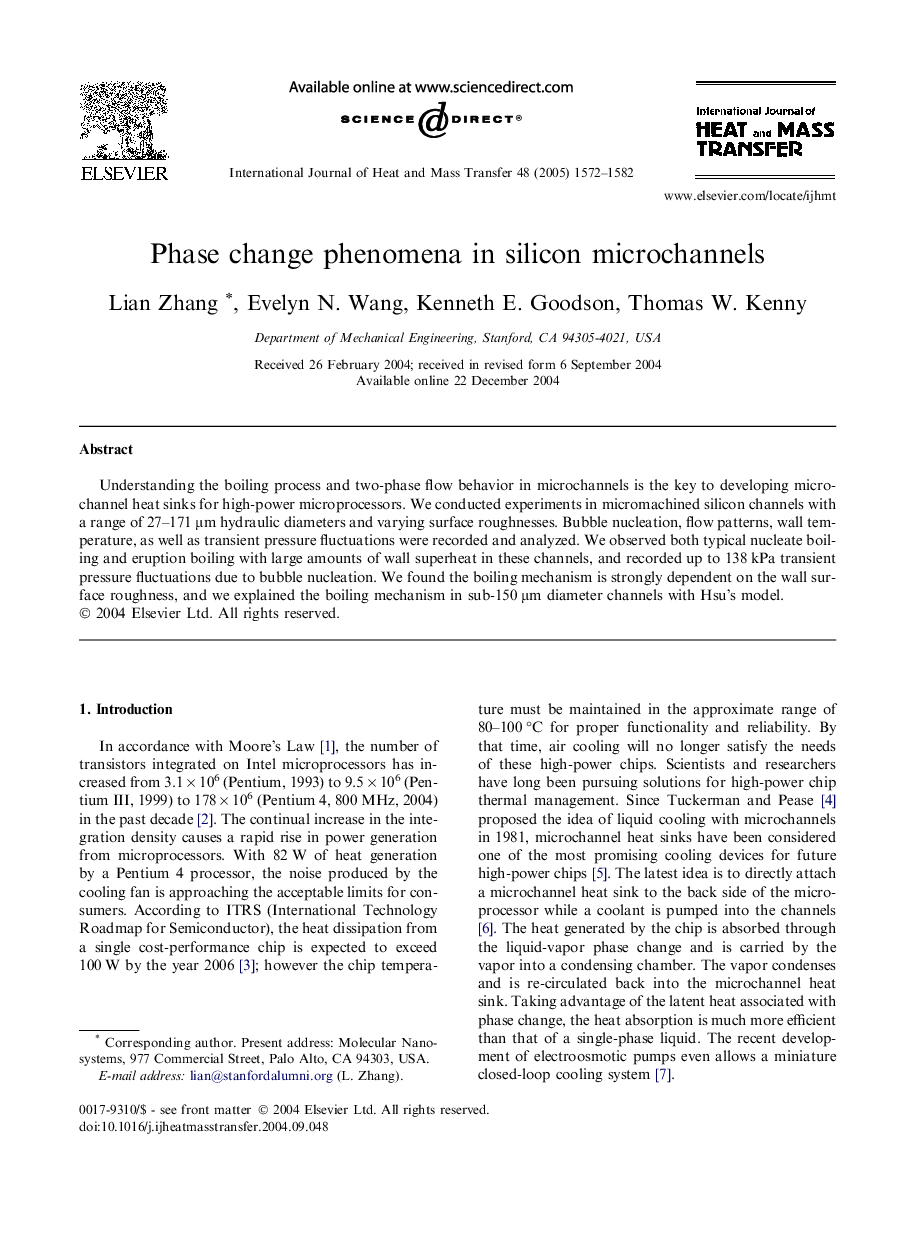| Article ID | Journal | Published Year | Pages | File Type |
|---|---|---|---|---|
| 9691597 | International Journal of Heat and Mass Transfer | 2005 | 11 Pages |
Abstract
Understanding the boiling process and two-phase flow behavior in microchannels is the key to developing microchannel heat sinks for high-power microprocessors. We conducted experiments in micromachined silicon channels with a range of 27-171 μm hydraulic diameters and varying surface roughnesses. Bubble nucleation, flow patterns, wall temperature, as well as transient pressure fluctuations were recorded and analyzed. We observed both typical nucleate boiling and eruption boiling with large amounts of wall superheat in these channels, and recorded up to 138 kPa transient pressure fluctuations due to bubble nucleation. We found the boiling mechanism is strongly dependent on the wall surface roughness, and we explained the boiling mechanism in sub-150 μm diameter channels with Hsu's model.
Related Topics
Physical Sciences and Engineering
Chemical Engineering
Fluid Flow and Transfer Processes
Authors
Lian Zhang, Evelyn N. Wang, Kenneth E. Goodson, Thomas W. Kenny,
